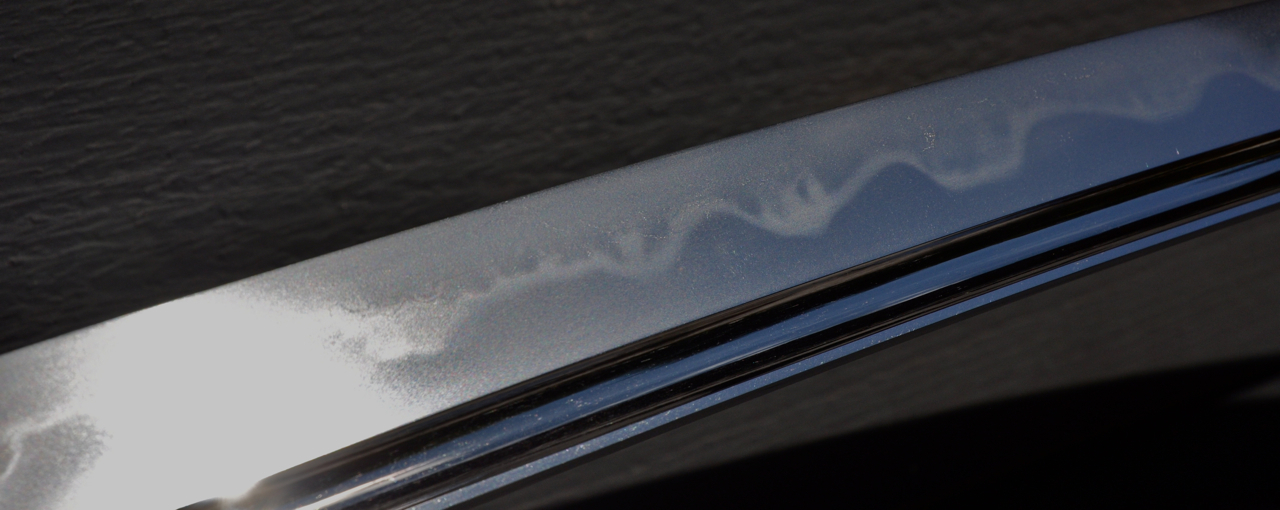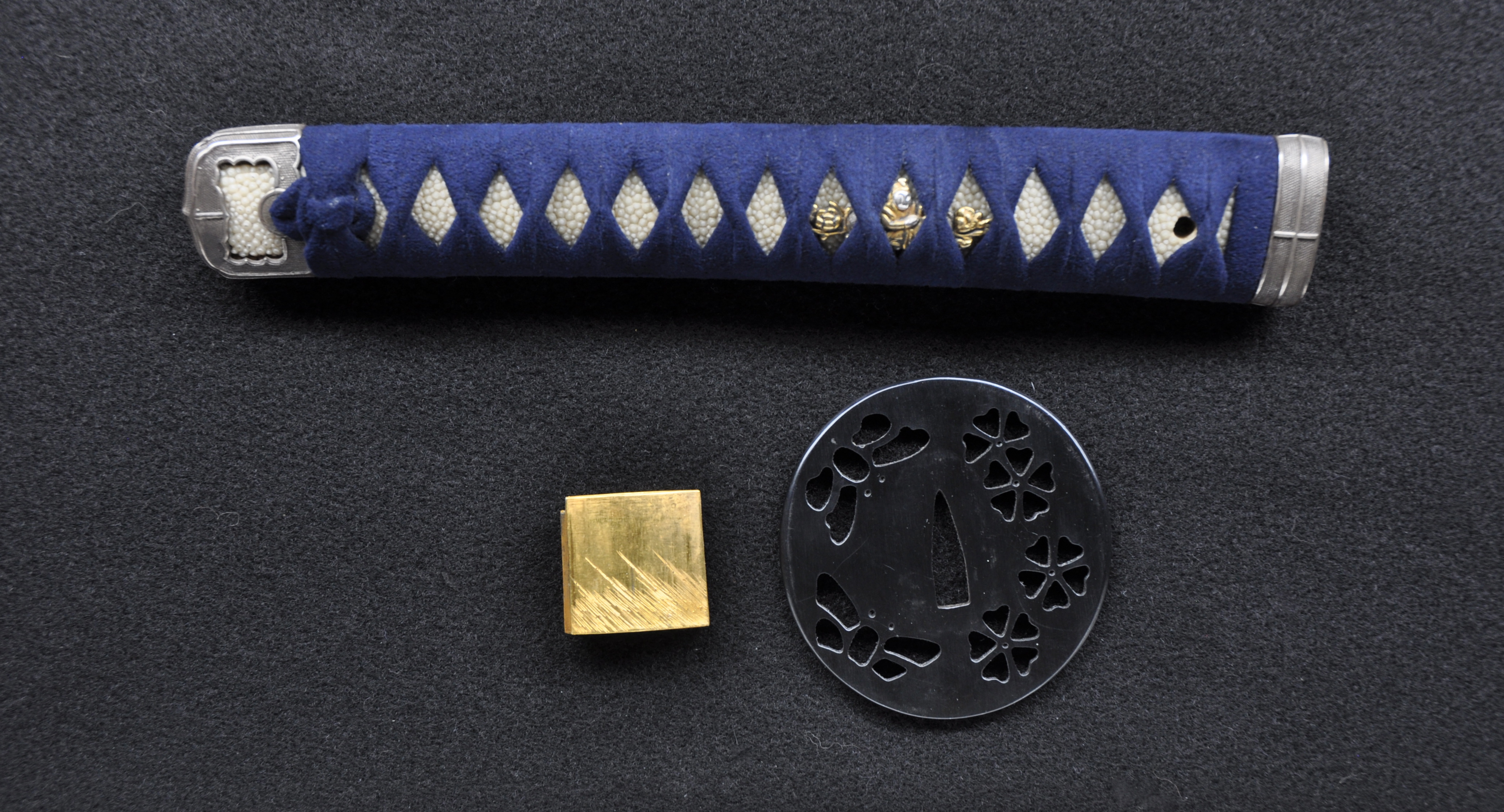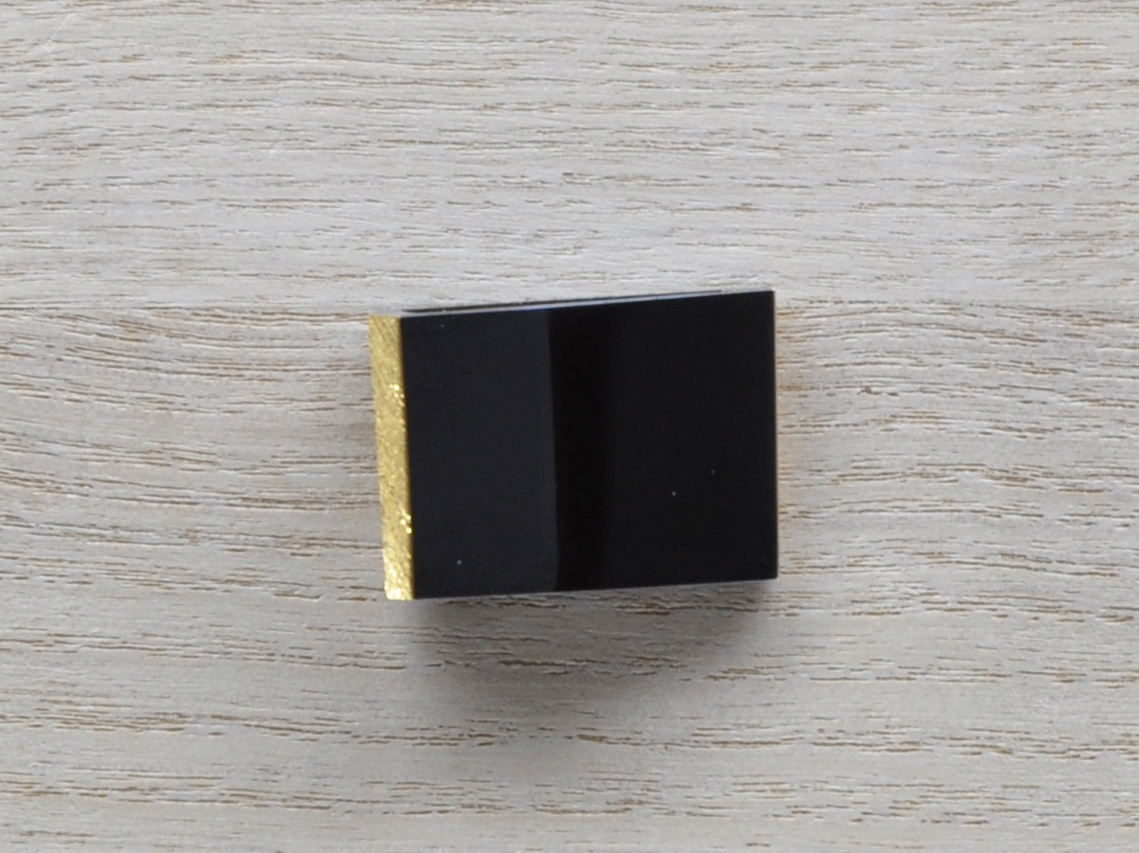Shinsakuto Kunimasa katana
Sold
A katana by the mukansa (2014) smith Kunimasa in shirasaya with a two piece gold foil over copper habaki, and a contemporary koshirae.
Nagasa: 29.5", 75 cm
Motohaba: 34 mm Motokasane: 7mm
Sakihaba: 28mm Sakikasane: 6mm
Nakago: Ha agari kuri jiri, sa agari yasurimei, one mekugi ana
Katana omote: Hishu junin Kunimasa saku no kore
Ura mei: Heisei himot ushi nen shogatsu kichijitsu (New Year, 1997, Heisei 9th year), Ohu Okuyama Kazuyuki shi ju
Ichiro Matsuba Kunimasa was ranked mukansa in 2014. He aspires to make blades in the Nambokucho style of Chogi Nagayoshi. HIs web page is here: https://matsubakatana.com.
This particular blade has a majestic suguta based on an ubu Bizen Nambokucho tachi with a longish chu kissaki, narrow and low shinogi ji, and a low iori mune. The blade tends to koshizori.
The omote hamon is in ko nie deki with profuse nioi, gunome chiji with peaks reaching almost to the shinogi, and broad valleys. The effect is of a snow-covered mountain range running the length of the blade. Profuse ashi and activity in nioi shine below the hamon. The ura is much the same, but becomes smaller and a little quieter as it runs through the monouchi. The mountain-scape effect is similar to the omote, but on a slightly smaller scale. The hamon continues into the boshi on both sides. The kaeri is Jizu-like on the omote, and almost kaen on the ura. The steel is a very tightly forged itame with areas of komokume. There is a bohi kaki nagashi on both sides. The upper end stops at the yokote.
The blade is in shirasaya and is accompanied by a good comtemporary koshirae with a dragon theme throughout.
SOLD













